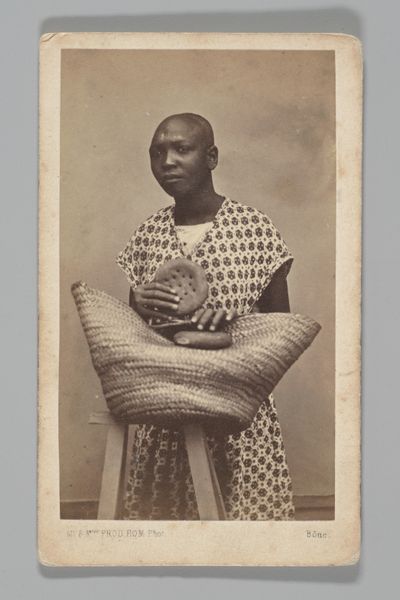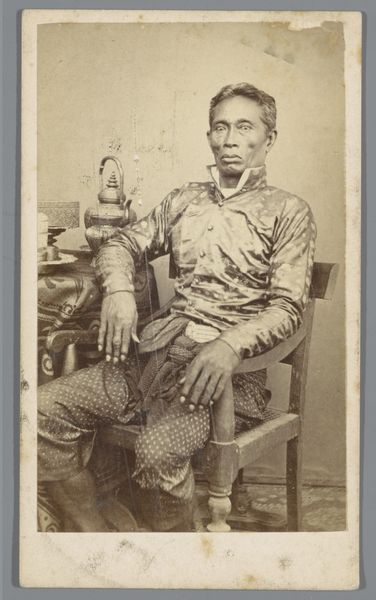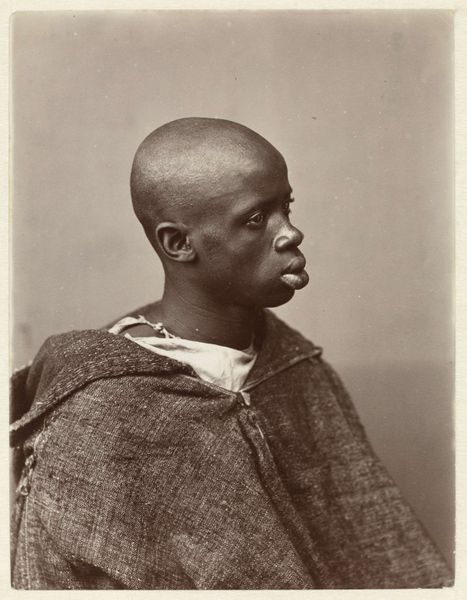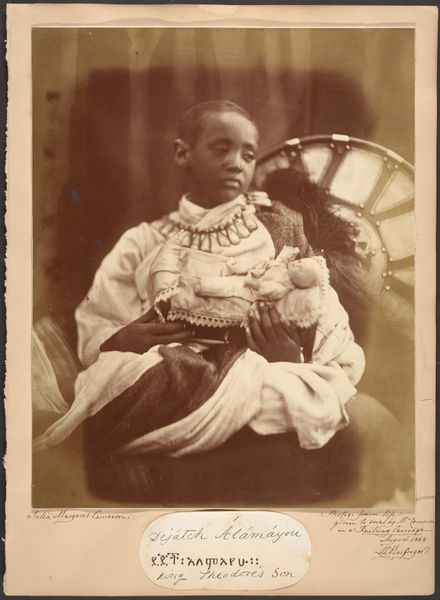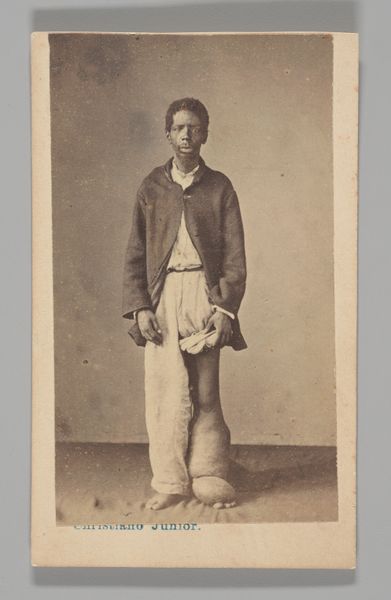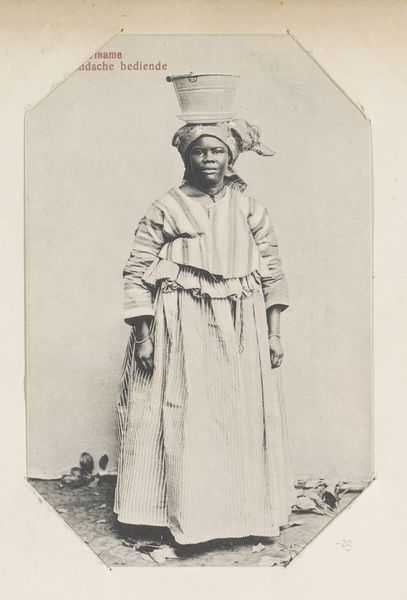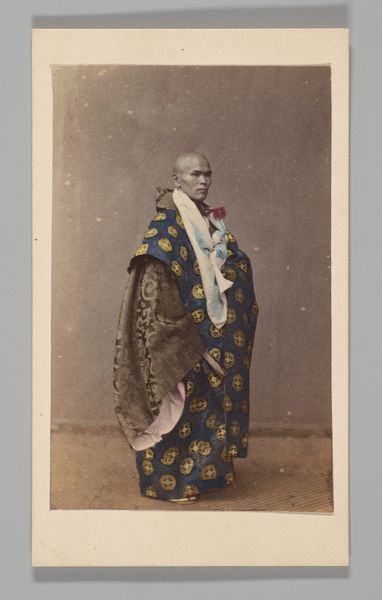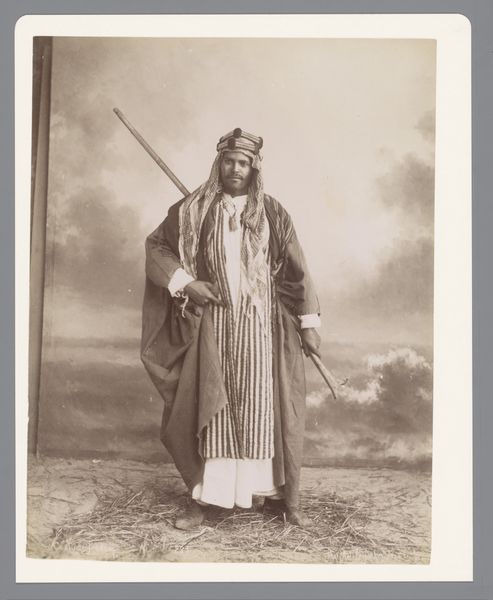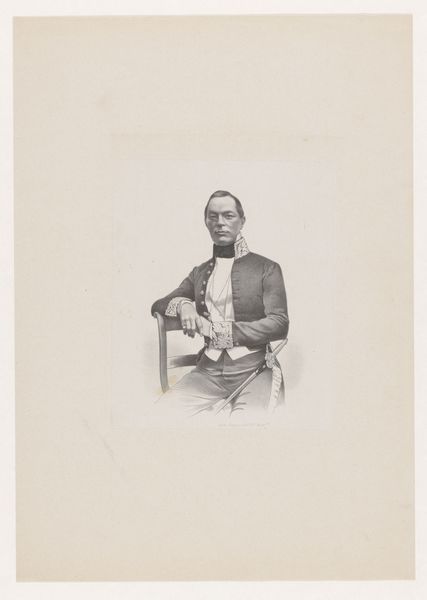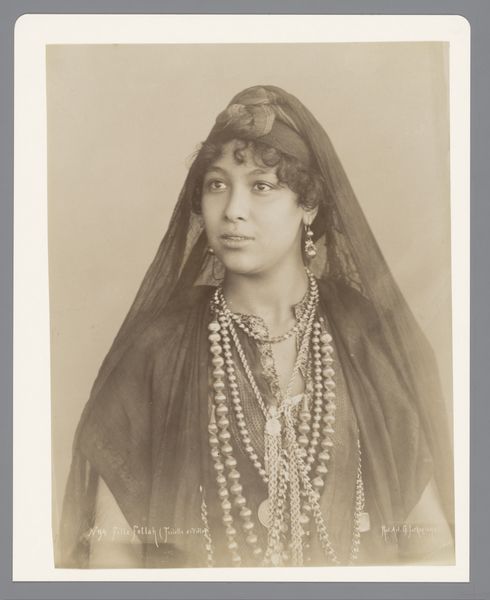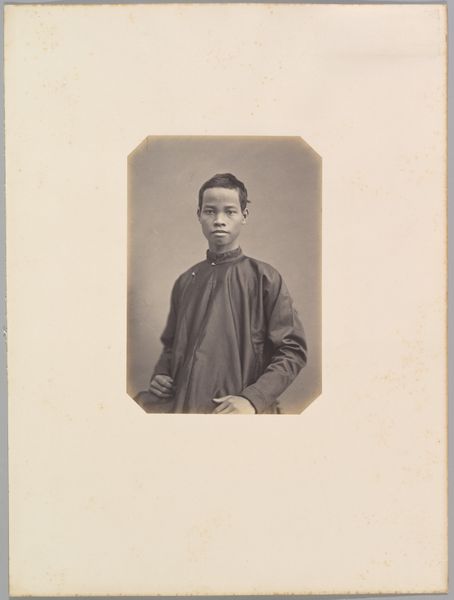
paper, photography, albumen-print
#
portrait
#
african-art
#
paper
#
photography
#
costume
#
paper medium
#
albumen-print
Dimensions: height 164 mm, width 108 mm
Copyright: Rijks Museum: Open Domain
Curator: Looking at this portrait, made sometime between 1863 and 1889, I'm immediately drawn in by its stillness. Famin et Cie. captured a remarkable individual, an unnamed man. There's such a quiet strength in his eyes. What's your initial reaction? Editor: My first thought is melancholy, even though his lips suggest a faint smile. The sepia tones lend it a timeless feel, but also a sort of faded glory. The lighting creates strong contrast, emphasizing the texture of his skin and the fabric draped over his shoulders. Curator: Yes, the use of light is superb. Famin et Cie. were masters of drawing out the subtle details, and you pointed out his clothing; that is really remarkable and speaks to his history. That striped shawl, or perhaps it's a very elaborate collar, sits interestingly on top of beaded necklaces that drape from his shoulders. Editor: Indeed! Semiotically, the costume and the stern yet kind gaze creates a dialogue with the viewer, questioning notions of identity, representation, and, dare I say, the colonial gaze itself. I feel the formal composition creates a powerful sense of presence. Curator: Presence is key, I think. And what is really incredible about the portrait, the costume details, or his stern gaze, is that the artwork is considered an albumen print on paper. This seemingly simple material choice underscores the accessibility of the art form at that time, its capacity to democratize representation. Editor: Right. It brings to mind the debates around photography's legitimacy as 'art' back then. Some critics dismissed it as mere mechanical reproduction, devoid of the artist's touch. Looking at this piece, with its intricate textures and carefully considered composition, it becomes a profound comment on artistry and agency. Curator: Absolutely. This portrait transcends mere documentation. It's a testament to the collaborative act between the photographer and the sitter, freezing a moment and prompting us to ponder the life and history embedded within it. What an invitation to think more about this history that has become accessible to the present-day viewer. Editor: I agree. In short, what seems like a quaint albumen print invites an aesthetic reflection. It serves as a window onto history, art, colonialism, and identity itself.
Comments
No comments
Be the first to comment and join the conversation on the ultimate creative platform.
